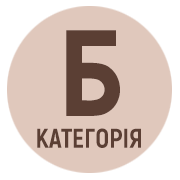INTEGRATING THE BITSY GAME CREATION TOOL INTO THE TEACHING PRACTICES OF HUMANITIES
DOI:
https://doi.org/10.32782/2412-9208-2024-3-333-344Keywords:
video games in education, digital communication tools, Bitsy, game design, video game creationAbstract
Video games today are a comprehensive tool with a wide range of applications, from creating models of various processes to being utilized in propaganda. The demands of modern education necessitate the incorporation of the latest digital tools for students to master. The task of creating video games can be particularly challenging in a department where students are studying humanities and lack the necessary skills for game development. Students at the Department of Information Communications at Borys Grinchenko Kyiv Metropolitan University have engaged in game creation within the courses Digital Communication Tools and Game Design, using tools that do not require programming skills. The article analyzes the alignment of video game creation teaching with general and professional competencies and learning outcomes within the specialty «Audiovisual Art and Production», which served as the basis for most of these classes. The potential of the «Acting» discipline for creating content for video games through voice acting is explored. Additionally, the article outlines the prospects for expanding the disciplines where video game creation practices could be appropriately applied, with a focus on «Screenwriting» and «Acting». The convenience of the Bitsy video game creation tool for students without programming knowledge was highlighted. However, compared to existing resources on video game creation, several shortcomings were identified that hinder its use in some of the discussed disciplines. Among these issues are the inability to add voice acting in the «Acting» course and the challenges posed by plot progression through stepby- step player movement in the context of «Screenwriting», which is atypical for cinema and television.
References
Горбань О. Освітній потенціал відеоігор: світоглядно-методологічні засади. Освітологічний дискурс. 2019. № 3-4. С. 19–34. URL: https://elibrary.kubg.edu.ua/id/eprint/28035/1/O_Horban_OPVSMZ_OD_2019_3-4(26-27).pdf.
Кравець Н. Ігрові технології навчання як одна з інноваційних форм навчально-виховного процесу ВНЗ. Матеріали XLVI науково-технічної конференції підрозділів ВНТУ, м. Вінниця, 22–24 верес. 2017 р. URL: https://conferences.vntu.edu.ua/index.php/all-hum/all-hum-2017/paper/view/2013.
Лугова Т. Наратив та сторітелінг в знанієвій структурі навчально-ділової відео гри як чинники синергії інформаційних технологій та духовно-орієнтованої педагогіки. Відкрите освітнє е-середовище сучасного університету. 2020. № 8. С. 42–59. URL: https://doi.org/10.28925/2414-0325.2020.8.6 (дата звернення: 26.09.2024).
Стандарт вищої освіти за спеціальністю 021 "Аудіовізуальне мистецтво та виробництво" для першого (бакалаврського) рівня вищої освіти. Чинний від 2019-06-26. Вид. офіц. Київ, 2019. 14 с. URL: https://mon.gov.ua/static-objects/mon/sites/1/vishcha-osvita/zatverdzeni%20standarty/2021/07/28/021-Audioviz.myst-vyrobnbakalavr.28.07.pdf (дата звернення: 27.09.2024).
Ткаченко О. Гейміфікація освіти: формальний і неформальний простір. Актуальні питання гуманітарних наук. 2015. № 11. С. 303–309.
Токарєва А. В. Використання комп’ютерних відеоігор у сучасному навчальному процесі. Вісник Дніпропетровського університету імені Альфреда Нобеля. Серія: Педагогіка і психологія. 2016. № 12. С. 374–378. URL: https://doi.org/10.32342/2522-4115-2016-0-12-374-378 (дата звернення: 31.10.2024).
Designing games as playable concepts: five design values for tiny embedded educational games / A. Kultima та ін. Proceedings of digra 2020 conference: play everywhere, м. Тампере. 2020. URL: https://dl.digra.org/index.php/dl/article/view/1261/1261.
Game jams in general formal education / R. Aurava та ін. International journal of child-computer interaction. 2021. № 28. URL: https://doi.org/10.1016/j.ijcci.2021.100274.
Radák J., Pálfi S. Eastern European courage through game art. The first two years of the game art programme at University of theatre and film arts, Budapest (2019–2021). gameinvironments. No. 15. P. 329–351. URL: https://journals.suub.uni-bremen.de/index.php/gamevironments/article/view/155/139 (дата звернення: 04.09.2024).






